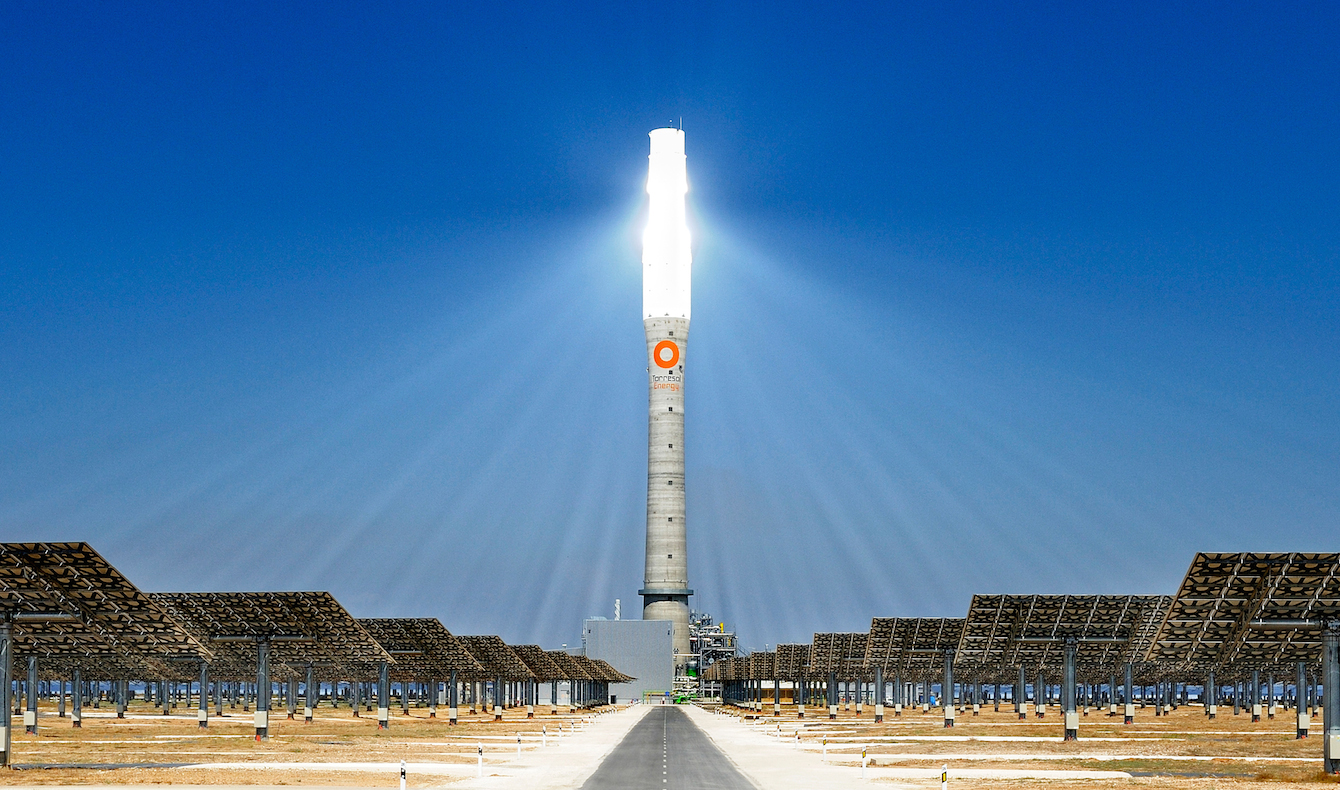We just published a paper in Nature Climate Change where we examine whether concentrating solar power (CSP) can provide the reliability we’re used to from conventional (fossil or nuclear) power plants. In other words, under what conditions can CSP plants provide baseload power, i.e. an essentially stable output of power over time similar to nuclear plants, and dispatchable power, i.e. power output that can be quickly called upon if needed to balance demand?

Gemasolar power plant (Source: Torresol Energy)
That CSP plants can do this has frequently been assumed, but we didn’t find any detailed examination of how well they could do so, or at what cost, in different parts of the world. We used an optimization model with high-resolution weather data to investigate the question.
Our model results suggest that getting a completely dispatchable or baseload capable fleet of CSP plants can be achieved within a cost range comparable to existing technologies, given some caveats like the need for coordination between individual plants and reductions in component costs (which we would expect to see if the technology is deployed at scale). The cost of doing so varies across the different world regions we investigated (the Southwestern United States, India, South Africa, and the Mediterranean/Middle East/North African region). In India and the United States, the cost of providing high availability CSP plants may be prohibitive, while in South Africa and the Mediterranean basin it is within the range of other technologies’ costs.
The full paper is available on the Nature Climate Change website.